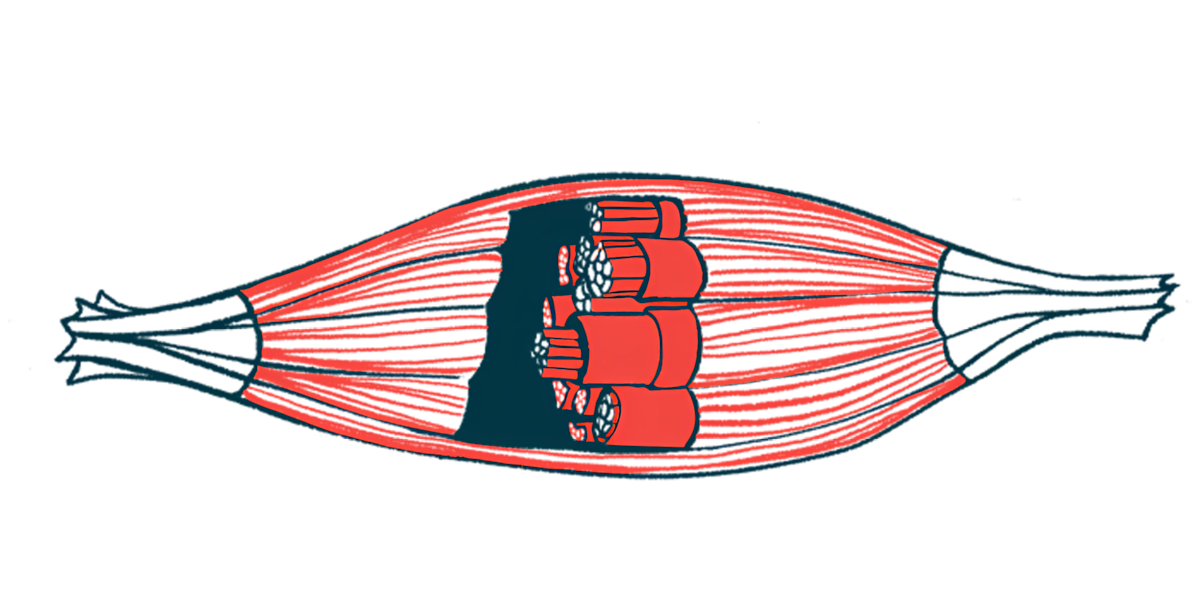Levodopa helps to ease muscle stiffness during faster movement
Study suggests that treatment lessens the forced nerve cells demand of muscles

Levodopa, a standard Parkinson’s disease medication, may help alleviate muscle stiffness, one of the condition’s characteristic motor symptoms, by slowing the speed of electrical signals sent to muscles during movement, particularly when muscles are required to stretch quickly, a small study reports.
Using a robotic device to help measure stiffness objectively, researchers suggested that levodopa reduces the force demanded of muscles by nerve cells, but it doesn’t change how far muscles naturally stretch or relax, at least in early-to-mid stages of the disease.
These findings “cannot be generalized to advanced patients in whom [levodopa] may lose its efficacy,” the researchers wrote in “Rigidity in Parkinson’s Disease: The Objective Effect of Levodopa,” published in the journal Movement Disorders.
Patients’ wrist movement tested during on and off levodopa states
Parkinson’s motor symptoms are due to the loss of dopaminergic neurons, the nerve cells in the brain responsible for producing dopamine, a chemical that signals for movement. In addition to stiffness, three other hallmark disease motor symptoms are slowed movement (bradykinesia), tremor, and problems with balance.
Levodopa, which works by increasing the amount of dopamine available in the brain, has been shown to ease these symptoms. However, precise research is lacking into measures of stiffness, also called rigidity, to understand how levodopa can change how well muscles stretch and relax.
Researchers already know that stiffness in Parkinson’s appears to depend on how fast muscles move, and that the amount of tension is linked to certain muscle reflexes. Now, the team in Italy looked at how well levodopa can ease stiffness using a robotic device for objective measurements.
The observational study (NCT05070780) enrolled 18 adults with early-to-moderate Parkinson’s and upper limb spasticity (mean age of 66.7, disease duration of 4.7 years), testing them both in an off state (when the effects of levodopa have worn off) and an on state (soon after taking levodopa). Patients sat near a robotic device, keeping their right arm relaxed. The robot moved their wrist through a 50-degree angle range at seven random speeds.
Levodopa eased total force of wrist movements, particularly quick movement
As muscles stretched, total force (a measure of components of muscle tone, like resting tension and elasticity) increased. However, levodopa reduced total force, especially during faster movements of the wrist. In other words, total force was lower during the on state compared with the off state at higher speeds, suggesting that the faster the wrist moved, the more levodopa helped to ease stiffness.
The neural component of stiffness — that is, the contribution of nerve cells to wrist movement — increased at higher speeds in both states but was significantly higher in the off state. This means that levodopa also reduced the neural component at higher speeds.
These changes mirrored improvements in clinical scores of stiffness, measured using a subscale of the Movement Disorders Society — Unified Parkinson’s Disease Rating Scale (MDS-UPDRS) part III, where higher scores indicate more severe motor symptoms.
While levodopa reduced the force caused by neural activity in muscles, it didn’t change the natural viscoelasticity of muscles themselves, or how much they resist and return to an initial shape as they deform upon stretching. Levodopa also eased long-latency reflexes, or muscle responses to nerve signals that involve processing in the brain before muscles react.
“Our methodology allowed us to determine the effect of dopaminergic stimulation on the objective rigidity in [Parkinson’s], report its velocity-dependent feature, and support neuronal activity as the main source of this biomechanical phenomenon,” the researchers wrote.
They plan to also evaluate levodopa’s effects on muscle rigidity in people in more advanced stages of Parkinson’s.







